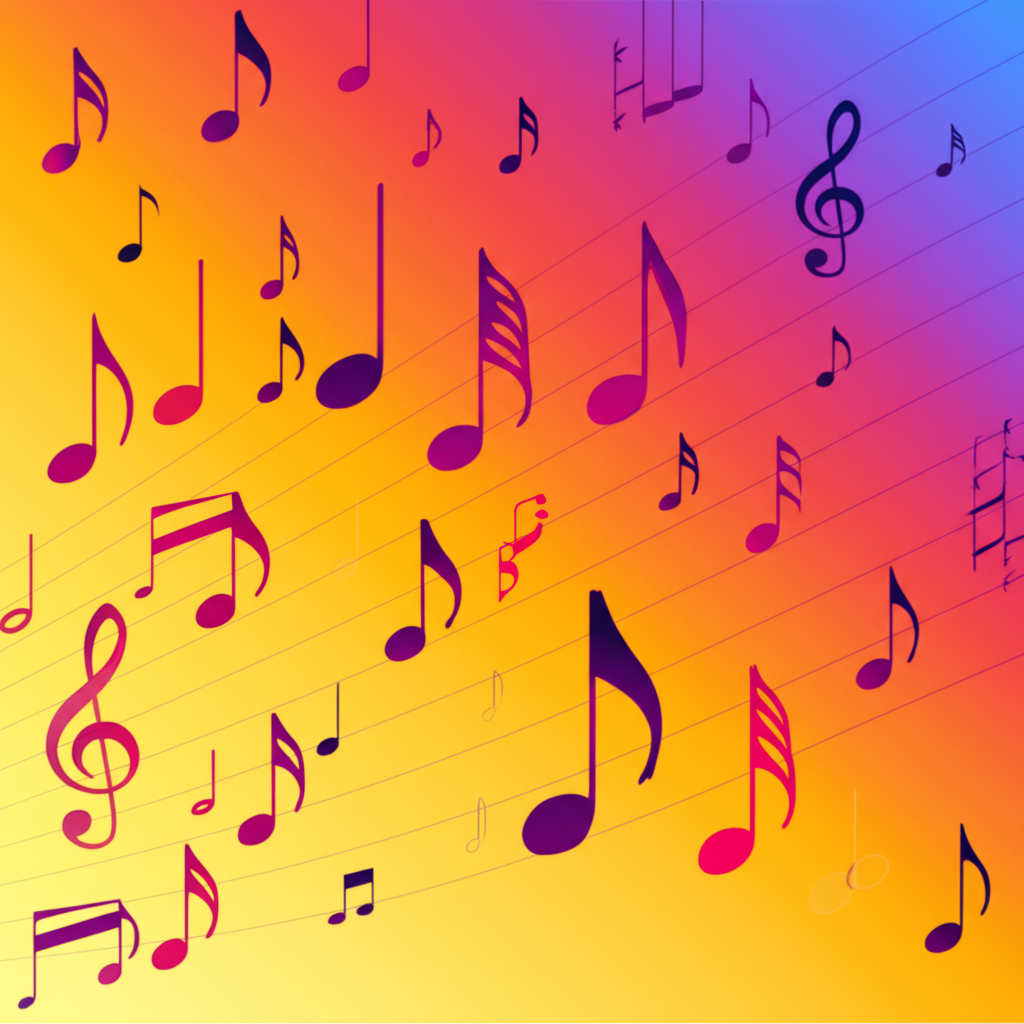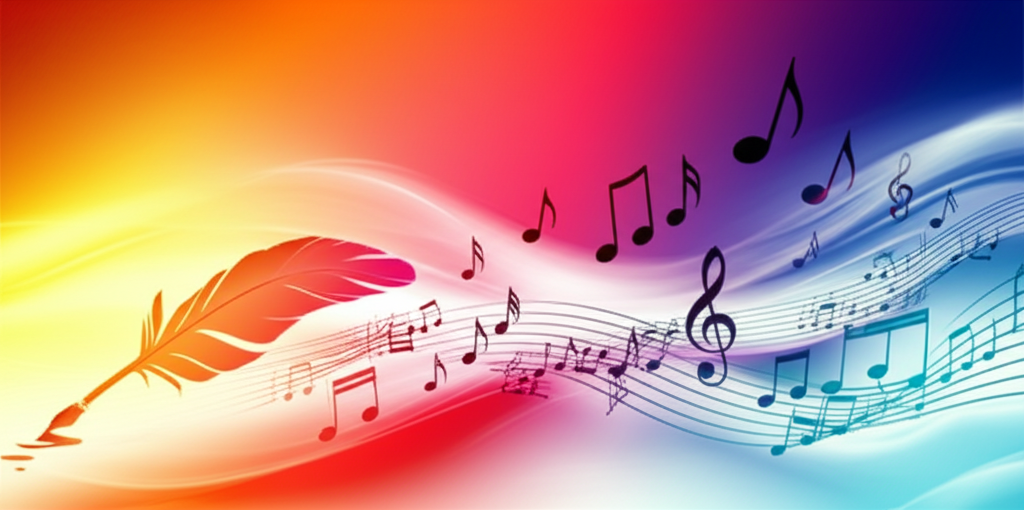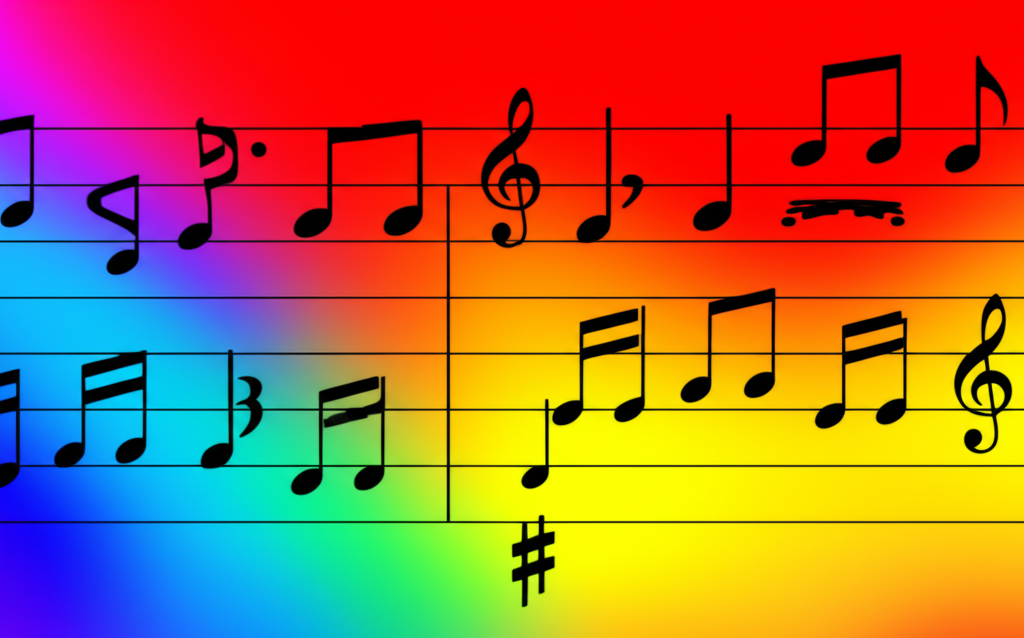
Understanding Musical Notation: The Language of Music

b4n1
May 17, 2025, 4:26 p.m.
Understanding Musical Notation: The Language of Music
Summary:
Musical notation is the universal language system that allows musicians to document, communicate, and preserve musical ideas across time and cultures. This comprehensive guide explores the fundamentals of staff notation, including staves, clefs, notes, rests, and key signatures. Whether you're a beginner taking your first steps into music literacy or an experienced musician looking to solidify your understanding, this article provides essential knowledge for reading, writing, and interpreting the written language of music.
Keywords:
musical notation, staff, clefs, treble clef, bass clef, notes, rests, time signature, key signature, music reading, musical symbols, grand staff, ledger lines
Introduction:
Musical notation is the remarkable system that transforms sound into visual symbols, allowing musicians to preserve and communicate musical ideas. Like written language lets us record thoughts and stories, musical notation enables composers to capture melodies, harmonies, and rhythms that might otherwise be lost to time.
For centuries, musicians have refined this system to convey increasingly complex musical ideas with precision. Today's standard notation has evolved through countless iterations to become a sophisticated, yet accessible, method for representing the rich tapestry of musical expression.
Learning to read music opens doors to a vast library of musical works spanning centuries and cultures. It gives musicians a common language to communicate regardless of what instruments they play or what languages they speak. This article will guide you through the fundamental elements of musical notation, providing you with the tools to begin your journey into music literacy.
The Staff: Music's Foundation
The Five-Line Staff
At the heart of musical notation is the staff (or stave) — five horizontal lines with four spaces between them. Every line and space represents a specific pitch, creating a visual map where higher positions indicate higher pitches and lower positions indicate lower pitches.
When a note's pitch extends beyond the five lines, we use short additional lines called ledger lines to accommodate these higher or lower notes. These temporary extensions of the staff maintain the logical progression of pitches beyond the standard five lines.
Clefs: Setting the Reference Point
Clefs are symbols placed at the beginning of the staff that establish which pitches correspond to which lines and spaces. The three main clefs are:
- Treble Clef (G Clef): Used for higher-pitched instruments and the right hand in piano music. The spiral of the treble clef wraps around the G line (second line from the bottom), marking its position.
- Bass Clef (F Clef): Used for lower-pitched instruments and the left hand in piano music. The two dots of the bass clef surround the F line (fourth line from the bottom).
- C Clef: A versatile clef where the center of the symbol indicates the position of middle C. Two common C clefs are:
- Alto Clef: Places middle C on the middle line, commonly used for viola.
- Tenor Clef: Places middle C on the fourth line from the bottom, used for higher ranges of cello, bassoon, and trombone.
The grand staff, used predominantly in piano music, combines treble and bass clefs joined by a brace, allowing pianists to read music for both hands simultaneously.
Notes and Rests: Sound and Silence
Note Values
Notes represent sounds of specific durations. Their visual appearance indicates how long they should be held relative to the beat. The main note values include:
- Whole note (semibreve): An open oval, held for four beats in 4/4 time.
- Half note (minim): An open oval with a stem, held for two beats in 4/4 time.
- Quarter note (crotchet): A filled oval with a stem, held for one beat in 4/4 time.
- Eighth note (quaver): A filled oval with a stem and a flag, held for half a beat in 4/4 time.
- Sixteenth note (semiquaver): A filled oval with a stem and two flags, held for a quarter of a beat in 4/4 time.
When eighth notes, sixteenth notes, or shorter durations occur consecutively, their flags are often replaced with beams connecting the stems, making the music easier to read and the groupings clearer.
Rests: Notating Silence
Just as notes represent sound, rests represent silence. Each note value has a corresponding rest value:
- Whole rest: A rectangle hanging below a line, indicating silence for four beats in 4/4 time.
- Half rest: A rectangle sitting on a line, indicating silence for two beats in 4/4 time.
- Quarter rest: A symbol resembling a zigzag, indicating silence for one beat in 4/4 time.
- Eighth rest: A symbol resembling a small number 7 with a dot, indicating silence for half a beat in 4/4 time.
- Sixteenth rest: Similar to an eighth rest but with an additional dash, indicating silence for a quarter of a beat in 4/4 time.
Dotted Notes and Rests
A dot placed after a note or rest increases its duration by half of its original value. For example, a dotted half note lasts for three beats (two beats for the half note plus one beat for the dot). This system allows for more rhythmic flexibility without requiring additional notation symbols.
Time Signatures: The Rhythmic Framework
Time signatures appear at the beginning of a piece after the clef and key signature. They consist of two numbers, one above the other:
- The top number indicates how many beats are in each measure.
- The bottom number indicates which note value represents one beat.
Common time signatures include:
- 4/4 (Common Time): Four quarter-note beats per measure. Often represented by a "C" symbol.
- 3/4: Three quarter-note beats per measure, commonly used for waltzes.
- 2/4: Two quarter-note beats per measure, common in marches.
- 6/8: Six eighth-note beats per measure, typically grouped into two beats of three eighth notes each, giving a lilting, compound feel.
- 2/2 (Cut Time): Two half-note beats per measure. Often represented by a "C" with a vertical line through it, indicating a faster tempo than common time.
Key Signatures: Tonal Context
Key signatures appear at the beginning of a staff after the clef but before the time signature. They consist of sharps (#) or flats (b) that apply to specific notes throughout the piece unless temporarily altered by accidentals.
The key signature establishes the tonal center or "home key" of a piece. It tells musicians which notes should be consistently raised or lowered without needing individual accidentals throughout the score.
Sharp Keys
Sharp keys follow the Circle of Fifths sequence: F#, C#, G#, D#, A#, E#, B#
- G major/E minor: One sharp (F#)
- D major/B minor: Two sharps (F#, C#)
- A major/F# minor: Three sharps (F#, C#, G#)
- E major/C# minor: Four sharps (F#, C#, G#, D#)
- B major/G# minor: Five sharps (F#, C#, G#, D#, A#)
Flat Keys
Flat keys follow the Circle of Fourths sequence: Bb, Eb, Ab, Db, Gb, Cb, Fb
- F major/D minor: One flat (Bb)
- Bb major/G minor: Two flats (Bb, Eb)
- Eb major/C minor: Three flats (Bb, Eb, Ab)
- Ab major/F minor: Four flats (Bb, Eb, Ab, Db)
- Db major/Bb minor: Five flats (Bb, Eb, Ab, Db, Gb)
Examples:
Example in ABC Notation:
Below is a simple C Major scale in treble clef, showing the progression of notes on the staff:
Here's a simple melody in G Major with a 3/4 time signature:
Historical Development:
The history of musical notation stretches back over a millennium, evolving from simple neumes (symbols indicating the general shape of a melody) to the sophisticated system we use today.
Guido of Arezzo (c. 991-1033), an Italian Benedictine monk, made several crucial contributions to the development of modern notation. He invented the four-line staff, developed a system of pitch notation using syllables (ut, re, mi, fa, sol, la - the predecessors to our modern solfege), and established the concept of staff lines representing specific pitches.
By the Renaissance period (c. 1400-1600), many elements of modern notation had been established, including standardized note shapes, five-line staves, bar lines, and time signatures. During the Baroque and Classical periods, notation became increasingly precise with added dynamic markings, tempo indications, and articulation symbols.
The 20th century saw further innovations with composers developing new symbols to express extended techniques, microtonal intervals, and electronic effects, expanding the vocabulary of notation to accommodate new sounds and musical ideas.
Interesting Facts:
Here are some fascinating tidbits about musical notation:
- The name "G clef" for the treble clef comes from the fact that the curl of the symbol wraps around the G line on the staff.
- The earliest form of musical notation in Western music was developed in the 9th century and consisted of small symbols called neumes placed above text to remind singers of melodies they already knew.
- The term "staff" comes from the Old English word "stæf," meaning stick or pole, as the horizontal lines resembled sticks laid across the page.
- Musicians often use mnemonics to remember the notes on the staff. For treble clef lines (E-G-B-D-F): "Every Good Boy Does Fine" and for spaces (F-A-C-E): "FACE."
- The shape of the bass clef evolved from a stylized letter F, marking the position of the F below middle C.
- While Western musical notation is dominant globally, other cultures have developed their own systems. Traditional Chinese music uses numbered notation (jianpu), Indian music uses sargam notation, and Japanese gagaku has its unique notation system.
Conclusion:
Musical notation is far more than just symbols on a page—it's a sophisticated language that has evolved over centuries to capture and communicate the ephemeral art of sound. By learning this visual language, musicians gain access to centuries of musical thought and can participate in the ongoing conversation of musical creation.
While modern technology offers shortcuts like tablature, audio recording, and notation software, understanding traditional notation remains fundamental for serious musicians. It provides a comprehensive framework for analyzing music, communicating with other musicians, and developing a deeper understanding of musical structure.
As you continue your musical journey, remember that fluency in notation, like any language, comes with practice. Each time you decipher a new piece of sheet music, you're connecting with a tradition that stretches back through centuries of musical thought, joining a conversation between composers, performers, and listeners across time.
References:
-
Read, Gardner. "Music Notation: A Manual of Modern Practice." Taplinger Publishing Company, 1979.
-
Stone, Kurt. "Music Notation in the Twentieth Century: A Practical Guidebook." W. W. Norton & Company, 1980.
-
Gerou, Tom, and Lusk, Linda. "Essential Dictionary of Music Notation." Alfred Music, 1996.
-
Rastall, Richard. "The Notation of Western Music: An Introduction." St. Martin's Press, 1982.

